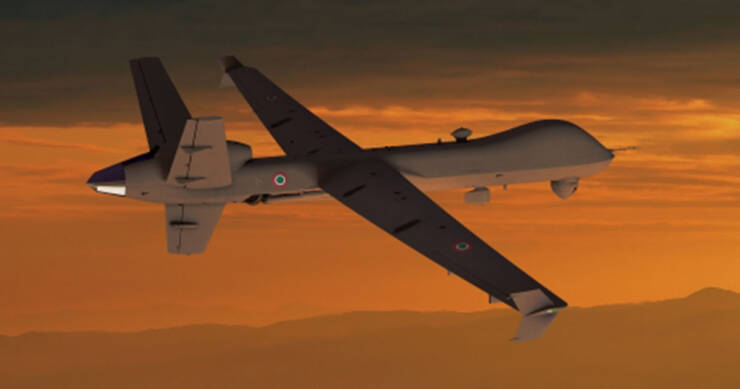
New Delhi: The Unmanned Aerial Vehicle (UAV) MQ-9A completed its 10,000th flight hour in support of India’s national security operations. Two MQ-9As that the Indian Navy flies have collected 10,000 flight hours in exactly two years.
On November 22, 2022, the MQ-9A Remotely Piloted Aircraft (RPA) owned by General Atomics Aeronautical Systems, Inc. (GA-ASI) and leased to the Indian Navy, completed its 10,000th flight hour.
Linden Blue, CEO of GA-ASI, said that the Indian Armed Forces were impressed by the MQ-9A’s over-the-horizon ISR support for surface troops and Indian warships, as well as the platform’s remarkable endurance and operational availability.
He noted that GA-ASI MQ-9As had helped the Indian Navy cover more than 14 million square miles of the operational area.
During the most recent escalation in hostilities, the MQ-9 was also deployed to the border with China.
The company release may have mixed up the designations for the variant supplied to India. GA-ASI said in a 2019 press release that it has partnered with Sankhya Infotech Limited to study Simulation Training and related initiatives supporting India’s Sea Guardian RPAS programme. The goal of the collaboration is to modify RPAS crew training to meet Indian regulations. On the page dedicated to leasing RPAs, the business notes that the Indian Navy operates two MQ-9B Pre-Production (PP) SeaGuardian aircraft.
The first flight of the turboprop-powered, multi-mission MQ-9A Remotely Piloted Aircraft (RPA) took place in 2001. It is based on Predator RPA. The United States and Royal Air Forces first referred to the MQ-9A as the “Reaper,” although the phrase “Predator B with weapons” is now more often used.
The MQ-9A has an endurance of nearly 27 hours, speeds of 240 KTAS, a maximum operating altitude of 50,000 feet, and a payload capacity of 3,850 pounds (1746 kilogrammes), which includes 3,000 pounds (1,340 kilogrammes) of external supplies.
Additionally, the MQ-9A can operate at a maximum operating altitude of 50,000 feet. The cargo capacity of the aeroplane has increased by a factor of 500, and it possesses nine times the normal amount of power. It provides the warfighter with the capability of long-term, persistent monitoring and strike operations.
The MQ-9A is equipped with a fault-tolerant flight control system and a triple redundant avionics system architecture, all of which contribute to the aircraft’s high level of dependability. It meets the reliability standards for manned aircraft.
The projected acquisition of a fleet of MQ-9 drones from the United States is in the works, according to the Navy Chief Admiral R. Hari Kumar who said at his press conference ahead of Navy Day on December Four.








